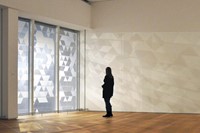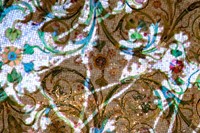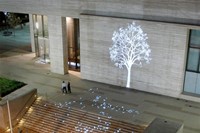The Dutch artist uses light, air and matter to explore the tangible and the hidden in everyday life
Installation artist Simon Heijdens’ site-specific works manipulate light, shadow and movement to create new and often astounding perspectives on the viewer's surrounding environment. The Dutch artist is one of the very best in his field at transforming public spaces, having exhibited in cities including New York, Shanghai, Cape Town and Doha. In 2014 he inaugurated London's Now Gallery with the kaleidoscopic light sculpture Shade, an interactive cellular glass façade which filtered sunlight and wind to create a choreographed pattern of lights across the gallery space, allowing an organic interaction between the interior and the changing exterior of the building.
The previous year, he turned heads at Design Miami with a series of hand-blown glass vessels which turned data from wind movement into projected patterns of light. Now re-exhibiting his site-responsive digital installation Lightweeds (2004) - part of the MoMA's permanent collection - in Istanbul, Heijden’s practice continues to combine the material, the experiential and the elusive in unique and fascinating ways.
Responding to the increasingly conditioned, static and climate-controlled urban environments of our daily lives, Heijdens utilises the digital to reintroduce us to nature’s element of surprise. The technology involved is intricate and subtle; often, he harnesses the versatilities of software and programming for the purpose of recreating natural growth and change. His acclaimed projection works Tree and Lightweeds are a fine example – they grow, die, pollinate and move in response to minute changes in their surroundings, turning their projected surfaces supple, organic and evolutionary again.
The aforementioned piece Shade, which was originally commissioned by the Art Institute Chicago, shares a similar aesthetic, but embeds itself even more explicitly in its environment: a responsive glass transfuses light varyingly throughout the day, turning the architectural identity of the building translucent, fluid, and subject to the rhythms of natural daylight. Inside, our perception of self and surrounding is transformed and re-aligned, blurring interior and exterior, natural and man-made. To get closer to these elusive yet immersive works, AnOther spoke to the London-based Dutch artist about the evolution of his vision, his creative process and his upcoming projects.
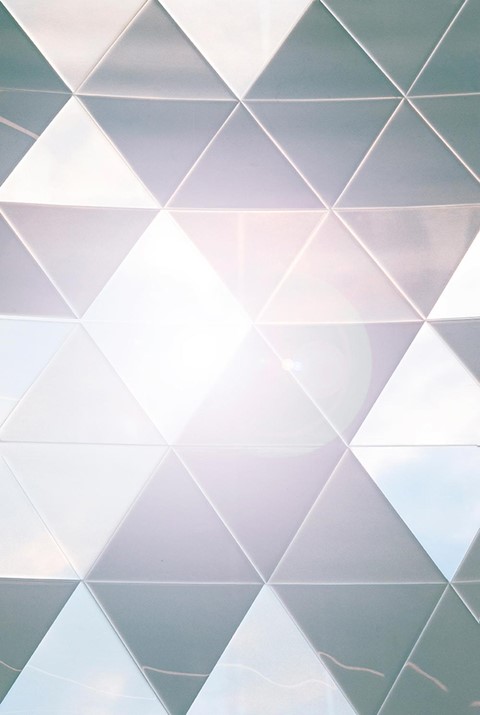
On the evolution of his aesthetic…
"My intention was to make the surfaces of our built environment sensitive again, through the way it senses both external conditions and the way people use and move through it. I never had any specific training in programming, so I began with the concept before I had chosen or understood my materials. It’s been a wonderful tool to learn: I see software as a material just like anything else, like marble or paint. Of all materials, it is a particularly malleable one, open to all variables.
I also find the question of form within this growth very interesting. Something like Lightweeds is, visually, such an understandable concept – the plant – that it’s almost banal. The more interesting aspect of the piece is how important and revealing the forms of the plants themselves have become. It’s the same idea as a beautiful typeface: as well-designed as a font may be, the purpose is to forget about its form at some point as you start reading. Lightweeds, when looked at through the question of form, is a constantly evolving piece, yet that aspect of it is hardly noticeable throughout."
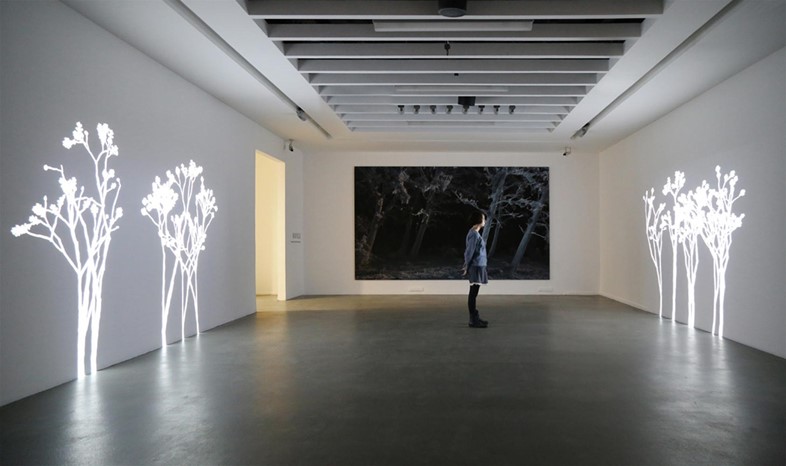
On his creative process…
"My practice is extremely slow. The cycle and rhythm of projects are slow, so any new project feels very unique to me at the start. Looking back, I can see certain ideas and preoccupations thread them all together, but I don’t approach a piece as something that aims to solve a problem. Rather, it may question a certain state of society, or try to create an awareness of something in people.
In that sense, Lightweeds has now become a real cornerstone of my work, because it was able to develop out of the limelight. Rather than having that immediate, ‘Instagram-able’ quality one minute and forgotten the next, it managed to grow over ten years, and is still evolving."

On the critique in his work...
"Growing up in the Netherlands, there is such a minute level of actual nature still in society, as most of it is artificial. It is also very densely populated, and society is very structured in a decidedly Western European way. In that sense, I think it misses out on some of the things other countries have. Growing up in those kinds of structured societies, where precautions have been taken against the natural and unplanned, has made me more aware of how life in Western Europe is becoming void of the element of coincidence."

On his creative influences…
"I cannot pinpoint one specific inspiration – they don’t come from external sources so much as my own daily observations of life in a city. The works are a part of their time, using relatively new materials – part of a particular generation’s way of living. Our immediate experience is the direct starting point of the pieces, but there are people whose work I really love, of course, like Richard Long. I am inspired by works that show an extreme sense of patience and of evolution."

On his upcoming projects…
"I can’t talk about the details yet, but there a few things I am working on now at the moment that seem to be taking on a new direction to my previous work. Then again, whenever I start something it always feels completely new; afterwards, looking back at what you leave behind, it’s often blatantly obvious how they all belong together."
Simon Heijdens’ Lightweeds is on dispay at Akbank Sanat, Istanbul, until February 13, 2016.



